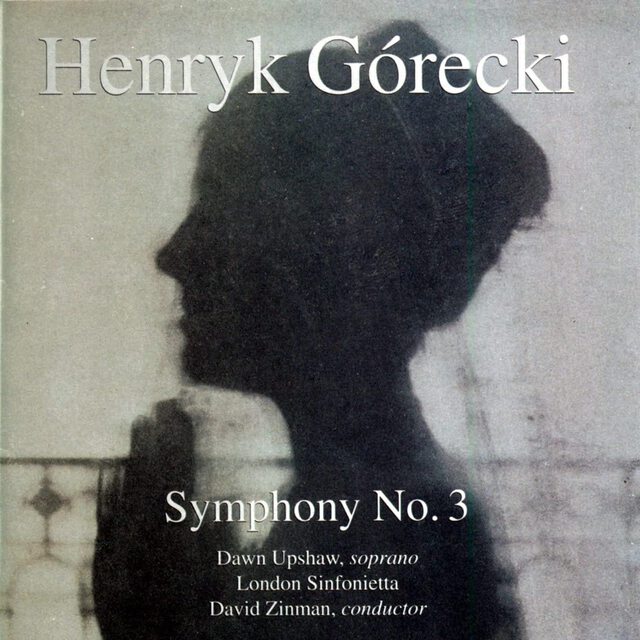I’m definitely not an aficionado of classical music, so it’s probably inevitable that my tastes in contemporary classical are at the more populist end of the scale, but this is a beautiful, emotional, piece. You probably wouldn’t file it under “easy listening”, though.
Composed by Poland’s Henryk Góecki in 1976, and receiving its première in April the following year, the work (Op 36) is often known as the Symphony of Sorrowful Songs.
Described as “austerely plaintive, emotionally direct and steeped in medieval modes”, the sombre orchestra accompanies a solo Soprano singing in Polish. The first movement features words from a 15th Century Polish lament, while the second is based on a message written on the wall of a WW2 Gestapo cell by a young woman. This is presented from the point of view of a child separated from her mother.
The third movement features words from a folk song in which a mother searches for her son lost in post-WW1 battles which resulted from the resulting land allocations around the Polish/German borders.
It’s definitely not “easy listening” even for those of us who don’t understand the words. And yet the music has a sombre beauty, and the soprano is quite stunning, especially when performed by Dawn Upshaw, in the popular 1992 version.
Beth Gibbons of Portishead released a live version of this symphony, with the Polish National Radio Symphony Orchestra.
If you want to check it out, I suggest starting with the popular second movement, preferably in the Upshaw version. But it’s worth listening to the whole symphony, and the 3rd movement ultimately is the most satisfying for me.
Given that several 4AD records have appeared on this blog so far, it’s worth noting that Lisa Gerrard (Dead Can Dance) has also recorded a version of this symphony. Sadly, I’ve failed to find a record of this that sounds good, however.
Links
-
 2nd Movement, Lento e largo - Tranquillissimo (Upshaw version)
2nd Movement, Lento e largo - Tranquillissimo (Upshaw version)
-
 1st Movement, Lento - Sostenuto tranquillo ma cantabile (Upshaw version)
1st Movement, Lento - Sostenuto tranquillo ma cantabile (Upshaw version)
-
 3rd Movement, Lento - Cantablile semplice (Upshaw version)
3rd Movement, Lento - Cantablile semplice (Upshaw version)
-
 Beth Gibbons performing the 3rd Movement
Beth Gibbons performing the 3rd Movement
-
 Symphony No 3, Górecki ft Lisa Gerrard (Bad recording)
Symphony No 3, Górecki ft Lisa Gerrard (Bad recording)
-
 About Górecki’s Symphony of Sorrowful Songs (Wikipedia)
About Górecki’s Symphony of Sorrowful Songs (Wikipedia)
